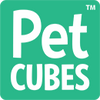Shopping Cart ( )
Your cart is currently empty.
Natural cat food consists of high quality ingredients without any additives or preservatives. They do not contain fillers that serve little purpose other than making your kitty feel full while providing it with little or no nutritional value.
In this article, we discuss in greater detail what exactly is natural cat food and the benefits it brings for your cat.

The Association of American Feed Control Officials (AAFCO) explains that natural cat food should consist of ingredients sourced from animals, plants or naturally occurring minerals. However, small amounts of healthy additives such as vitamins are allowed as an exception.
Natural wet cat food is actually relatively similar to normal wet food in terms of moisture content. The only difference between the two is that the quality of natural cat food is guaranteed. The absence of preservatives and harmful additives as promised in natural food ensures that your cat is getting the best nutrition.
Natural wet cat food also contains the moisture that a cat needs. This is particularly advantageous as cats rarely consume water on their own. It is easier to chew compared to natural dry cat food.
Petcubes’ freshly prepared raw cat food sourced from human-grade meat can be served to your feline as part of a natural wet cat food diet. Raw meaty bone is another option only if your kitty does not have dental problems, diseases or misshapen jaws that makes it difficult to chew. You can serve 1 to 2 raw bones per week with a few days gap in between each feeding.
Natural dry cat food usually has higher protein content and less carbohydrate compared to the cheaper dry food options. The higher calories in natural food makes your kitty full faster thus, the portions can be reduced.
A cat who is fed solely with natural dry cat food should consume about a cup of water per ten pounds of body weight per day to stay hydrated.
Natural dry food is mostly chosen due to its convenience, cost-effectiveness, longer shelf life and odorlessness as opposed to natural wet cat food. However, the carbohydrate content is higher in natural dry cat food making it more suitable for an active or outdoor cat.
Organic cat food is always considered natural while the reverse is not necessarily true.
Organic crops have to be grown on land that have been pesticide-free for at least three years. To be qualified as organic livestock, the said livestock must consume organic feed, have outdoor access as well as do not receive growth hormones or antibiotics.
Organic labels are more stringently regulated by the United States Department of Agriculture (USDA). There are different degrees of organic depending on the percentage of organic ingredients in the food, ranging from 75% to 100%, unless stated otherwise.
Natural food is not regulated by USDA and does not specify any information on the raising, care or feeding of the animal source used. They are however, minimally processed with little or no additives.
Artificial flavours or colours can improve the smell, look or taste of cat food such as Red 40, Blue 2, and Yellow 5 or 6. According to the Center for Science in the Public Interest (CSPI) the three most widely used dyes, namely Red 40, Yellow 5 and Yellow 6 are known to be contaminated with carcinogens, which is unhealthy for humans and cats alike.
It is best to observe the colour of the food you serve your cat, especially kibbles to know if the colour is natural or artificial. Artificial colouring is sometimes added to cat food so that the perception of real ingredients are added. For example, green colouring is added for ‘vegetables’. Instead, read the list of ingredients on the label to see if there are any artificial additives added to it.
Natural flavour can be derived from nutritional yeast, for instance, glutamic acid that enhances the meaty flavour.
Potassium chloride is used in cat food as a natural preservative and salt is used for flavour.
Quality natural cat food does not require these additives as they are naturally palatable.
For your feline who has urinary issues, you can serve it with natural cat food to prevent the formation of urinary crystals.
Wet food types will be a better option for such conditions because the moisture keeps your kitty hydrated and dilutes any minerals that may cause stones and crystals. Not only can it prevent the formation of calcium stones, it can also decrease the concentration of ions in your cat’s urine.
Feeding your cat smaller, more frequent meals of natural cat food at least 4 to 5 times a day also increases its urinary tract health and is consistent with a cat’s natural eating pattern.
It’s actually no hassle at all as a natural food diet is usually associated with raw cat food. However, when trying to switch your cat to a natural food diet, be sure to do it gradually. You can mix the new diet with its existing one and slowly phase it out to allow your feline to ease into the change. This can help to avoid gastrointestinal issues such as vomiting and diarrhea.
As cats are obligate carnivores who need to consume animal protein as part of their diets, natural raw cat foods are usually palatable to them. It is best to add a little vegetable to their meals to achieve balanced diets.
You have no items in wishlist.
| Title |
|---|
| Price |
| Add to cart |
| Type |
| Vendor |
| Title |
|---|
| Price |
| Add to cart |
| Type |
| Vendor |


